Visible and infrared (incl THz)
Visible & infrared (incl ThZ)
Visible & infrared (incl ThZ)
Professors
Prof Bill Barnes
.jpg)
Light-Matter Coupling - Linking molecules with light
Traditionally, making molecules with new properties, e.g. dyes of different colours, has been the province of chemistry; new properties are based on making new molecules. Our approach is fundamentally different- we use light to alter the way molecules interact with each other, something that can lead to radical changes in their properties, without changing their chemical composition. In the RF we are making use of metamaterials as analogies of molecular systems to explore these new ideas.
Visit the photmat website.
Prof C David Wright
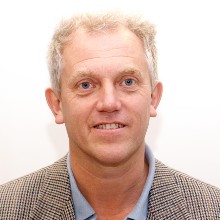
Active/Reconfigurable Metasurfaces; phase-change materials
Conventional metamaterials and metasurfaces (the 2D form of metamaterials) are ‘fixed-by-design’, with performance determined by the form of their resonating structures and the properties of the materials of which they are made. Far greater functionality and application would be available if we could develop active versions, i.e. metamaterials whose response can be dynamically adapted, tuned or reconfigured. At Exeter we are doing just this, using chalcogenide phase-change materials to deliver active optical metasurfaces that can work from the UV right out to the THz, and with applications ranging from LiDAR to multispectral imaging, optoelectronic displays, chemical sensing and much more.
Euan Hendry
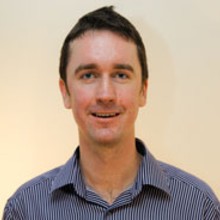
THz materials, imaging and spectroscopy; Nonlinear optics
We explore the potential for developing new THz components and sensors to fill the so called “THz gap”, utilizing novel magnetic and plasmonic responses of many materials in this region, and are currently working on novel methods for imaging in this difficult spectral region. We also work in plasmoncs, and explore the possibility of replacing coinage metals with new materials such as graphene and ITO. These materials have tuneable electromagnetic responses, as free electrons can controllably introduced by chemical, electrical or photo-doping, making the manipulating light on extreme sub-wavelength length scales possible, and we focus on enhancing nonlinear optical responses for optical switching etc.
Prof Francesca Palombo

Biophotonics and Biomechanics
My research is focused on the development of Brillouin, Raman and FTIR spectroscopy methods for applications to the biomedical sciences. I am particularly interested in the physical and chemical aspects of biological systems at a molecular level, as well as their implications in disease. Previously, I developed the application of attenuated total reflection (ATR) FTIR imaging to atherosclerosis in small animal models. I applied both ultrafast time-resolved optical Kerr effect (OKE) and THz-Raman scattering to elucidate the dynamics, structure and interactions in ionic solutions.
Prof Frank Vollmer
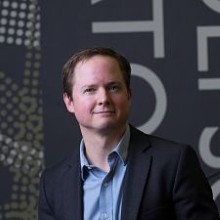
Single-Molecule Biosensors
Sensor systems have emerged that exhibit extraordinary sensitivity for detecting physical, chemical, and biological entities at the micro/nanoscale. Particularly exciting is the detection and analysis of molecules on miniature devices that have many possible applications in health, environment, analysis, and security.
Living Systems Institute (LSI): Vollmer Laboratory of Nano and Quantum Biosensing
Prof Geoff Nash
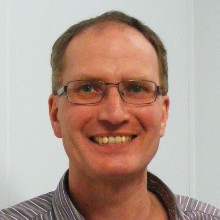
Optical and Acoustic Materials and Devices
Within the NEST group we explore the fascinating characteristics of new materials including 2D materials- for example, graphene and metasurfaces. We both investigate fundamental phenomena, such as the interaction of light with molecules, and aim to exploit these phenomena to create novel technology.
Prof Jacopo Bertolotti
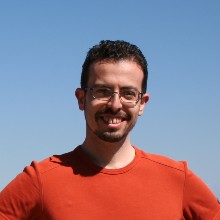
The properties of light transport in disorder and "complex" media
Disorder is often considered to be a hindrance. It reduces the performances of otherwise carefully designed devices, scatters and scrambles signals, and it is difficult to describe with simple deterministic models. But as much as people try to minimize disorder, it is impossible to ever completely remove it. Instead, our research aim is to understand and exploit disorder.
Our approach is to study the correlations due to the fact that, despite difficult to completely characterize, disordered system are still deterministic at a fundamental level, and use them to extract information that is usually considered lost. In particular we focus on the problem of imaging in turbid and highly scattering media.
Prof Monica Craciun
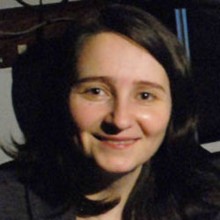
Nanoscience and NanotechnologyMy research expertise spans across applied research in nanotechnology, electronic and optoelectronic devices to fundamental research in nanoscience (quantum phenomena, molecular electronics, nano electronics, spintronics) and materials science.
In particular, I am currently focused on the study of 2D materials such as graphene, functionalized graphene and layered dichalcogenides (e.g. MoS2, WS2), and of their hybrids with other emerging materials (e.g. organic semiconductors, perovskites). The aim is to create new materials and devices with unique electronic and optoelectronic properties not available in any other systems. In particular, we explore novel devices that can be used in emerging technologies such as electronic textiles, multifunctional smart coatings, or in a new generation of highly efficient solar cells and light emitting devices.
Prof Saverio Russo
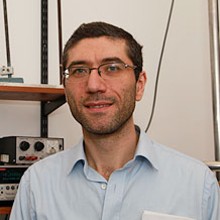
Quantum Systems and Nanomaterials
My research group is pioneering the novel science found in nano-systems. In particular, we are currently studying the electrical properties of graphene materials, which are just one or few carbon atom thick with honeycomb structure. In these materials charge carriers have a record high mobility at room temperature and behave as massless Dirac fermions.
Our main research directions are
- Graphene-based flexible and transparent electronic devices.
- Novel technologies for fabricating suspended and double gated graphene transistors to access the electric field tuneable low-energy band structure in few-layer graphene and the electro-mechanical properties.
- Search for highly conductive and transparent materials.
- Superconducting-graphene hybrid structures.
Associate Professors
Prof Dave Phillips
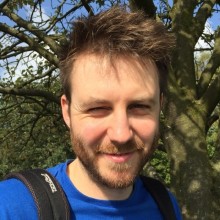
Structured light
I work on spatial structuring of infra-red and visible light for a variety of applications to imaging, optical trapping and optical communications. Dynamic light shaping is achieved using liquid crystal spatial light modulators and digital micro-mirror devices. We are also developing new methods to create compact light transforming optics using direct laser writing (microscale 3D printing).
Prof Janet Anders
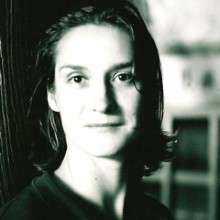
Quantum thermodynamics
Our research focusses on providing theoretical understanding of thermodynamics at the nanoscale. Specifically, we investigate the importance of small scale fluctuations and non-equilibrium effects within stochastic thermodynamics and investigate the impact quantum effects, such as coherences and entanglement, have on thermodynamic processes.
My work enables a better understanding and manipulation of heat/energy at the nanoscale. I am currently also involved in a project that may, one day, lead to single molecule sensing for diagnostics in the healthcare sector. Previously, I focussed on quantum cryptography which can find applications in communication and security.
Please see the Quantum Group website for more information.
Prof Mikhail (Misha) Portnoi
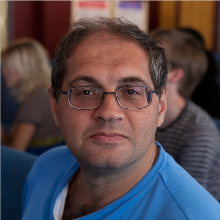
Theory of optical and transport properties of nanostructures
I am a theoretical physicist with a broad range of research interests spanning from exactly-solvable problems in quantum and statistical mechanics and anyon excitons in the fractional quantum Hall effect regime to THz applications of carbon-based nanostructures and modelling white light-emitting diodes. My most recent work is related to electronic waveguides and zero-energy states in graphene and THz gain and excitons in narrow-gap carbon nanotubes as well as optoelectronic applications and quantum optics of quantum rings.
View Mikhail's publications.
Dr Simon Horsley

Theory of electromagnetic and acoustic materials
Design of electromagnetic materials: Suppose you want to do something to a wave; perhaps redirect a radio wave, or absorb a sound wave. I use mathematics to look for the materials you need.
I am interested in the theory of electromagnetism and wave physics in general. Recently I have been thinking about how waves reflect from metamaterial structures, but I also work on the theory of quantum electromagnetism in dielectric media (I am interested in understanding how macroscopic bodies affect the quantum properties of the electromagnetic field, and how these in turn affect the motion of the object).
Senior Lecturers / Lecturers
Dr Alex Corbett
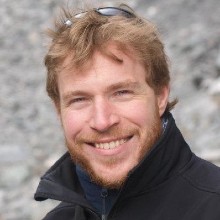
Fluorescence Microscopy
We explore different techniques for non-invasively observing live biological samples to recover three dimensional image data. These techniques include exploiting linear and non-linear optical effects, phase conjugation techniques or using active optical devices to generate structured light patterns to provide image data with high spatial and temporal resolution.
Key research challenges include expanding the three dimensional field of view of these imaging system to study larger samples, the development of new probes to improve contrast, imaging depth and chemical specificity, increasing sample throughput to generate reliable statistics of specimen behaviour and finally generating new image processing algorithms (including AI) to extract meaningful information from large data sets.
Dr Calum Williams
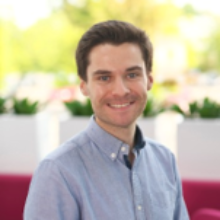
Calum's research aims to understand & control light-matter interactions in photonic nanostructures, and to build next-generation optical devices that make use of this understanding.
He is specifically interested in unconventional imaging and sensing systems (visible-to-mid-infrared wavebands) enabled through the development of new nanofabrication tools, tunable optical (active) materials, and multifunctional optical metasurfaces. Application areas include biomedical diagnostics, environmental monitoring and remote sensing. Research challenges lying at the interface between disciplines are particularly exciting.
Dr Changxu Liu
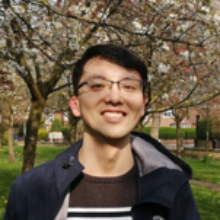
In most nanotechnology contexts, we design structures with ordered geometries and model how electromagnetic waves interact with these perfect geometries. However, manufacturing devices with nanometre-level tolerance can be expensive and time-consuming. Furthermore, even with state-of-the-art fabrication facilities, imperfections in the manufacturing process are inevitable, leading to a performance degradation from the original design.
In Changxu's research, he is focusing on both sides of the coin: designing optical systems with specific features (topology) that are robust to fabrication errors or, more interestingly, harnessing intrinsic disorder within nanostructures as a benefit for various applications, ranging from energy harvesting, optical sensing to light manipulation.
Dr David Horsell
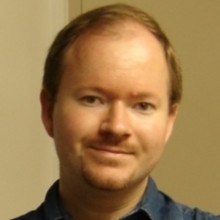
Acoustic and thermal devices
We study the generation, control and interaction between sound, heat and electricity in materials. The focus of our experimental research is to study the fundamental physics of acoustic, thermal and electrical transport both within materials and across interfaces between materials. This has direct application in sound production, heat management in electronics, and improved efficiency of electronic devices. We also investigate the ways in which these properties can be used for active sensing, which includes detection of gas and fluids as well as electrical and thermal features of materials. Our work extends into biological systems, including biomimetics, thermoregulation in insects and electrical signalling in plants and animals.
Dr Eros Mariani
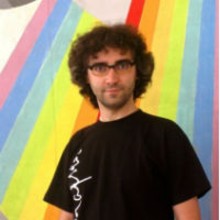
Theoretical condensed matter physics
My research spans different areas of condensed matter theory, with particular focus on the properties of correlated states in reduced dimensionality. These include quantum transport in two dimensional (2D) electron systems in the fractional Quantum Hall regime, the electronic and electromechanical properties of graphene and carbon nanotubes [e.g. Phys. Rev. Lett. 100, 076801 (2008)], as well as nano-electromechanical systems [e.g. Nature Physics 5, 327 - 331 (2009)] and suspended Josephson junction resonators.
Within the field of metamaterials I recently started investigating the properties of tunable Dirac-like and topological polaritons in 2D arrays of dipolar resonators embedded in optical cavities. Here we showed that the photon-mediated interactions between the resonators give rise to a tunable polariton bandstructure, with the emergence of type I and II chiral Dirac-like quasiparticles [Nature Communications 9, 2194 (2018)]. In parallel, we have recently unveiled how strained metasurfaces embedded in optical cavities lead to tunable fictitious magnetic fields for light [Nature Photonics 14, 669 (2020)].
Dr Isaac Luxmoore
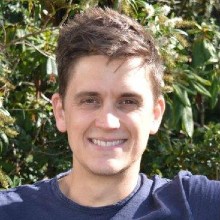
Quantum Nanophotonics
Optoelectronic devices, which generate, manipulate and measure light, underpin modern communication and have enabled the internet to revolutionise the modern world. A new generation of quantum optoelectronic devices, which process light at the single photon level, promise a further revolution in the way we communicate, measure and process data. Individual photons, the elementary particles of light, are the building blocks of this technology, but must first be generated by single photon sources. For practical applications the photons must be generated on-demand, at high repetition rates and must be indistinguishable, in other words identical in all degrees of freedom (for example energy and polarisation). My research is centred around the development of such devices through the exploration of novel materials and their nanophotonic integration.
